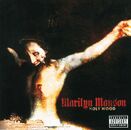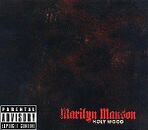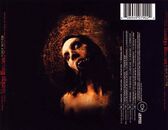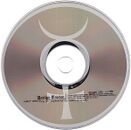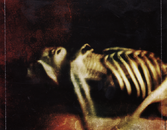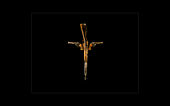Holy Wood (In the Shadow of the Valley of Death)
- This article is about the album. For other uses, see In the Shadow of the Valley of Death and Holy Wood (novel).
| Holy Wood (In the Shadow of the Valley of Death) | |||||
|---|---|---|---|---|---|
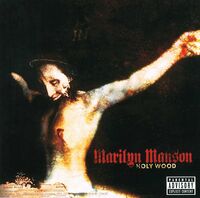
|
|||||
| Studio album by Marilyn Manson | |||||
| Released | November 13, 2000 (United Kingdom) November 14, 2000 (Australia and United States) December 5, 2000 (Japan) |
||||
| Recorded | 1999–2000 at the Mansion in Death Valley, California | ||||
| Genre | Alternative metal, heavy metal, industrial metal | ||||
| Length | 68:19 | ||||
| Label | Nothing, Interscope | ||||
| Producer | Marilyn Manson, Dave Sardy | ||||
| Analysis and Interpretations | |||||
|
The Third And Final Beast (Nachtkabarett) |
|||||
| Marilyn Manson chronology | |||||
|
|||||
Holy Wood (In the Shadow of the Valley of Death) is the fourth full-length studio album by Marilyn Manson. It was released on November 14, 2000 in the US and Australia by Interscope Records. Unlike their previous outings, Holy Wood was a commercial disappointment despite generally favorable reviews from critics[1] and marked a return to the industrial rock/metal style of the band's earlier efforts after the group's foray into glam rock on Mechanical Animals.
It is a concept album and the third and final installment in a trilogy that includes Antichrist Superstar and Mechanical Animals.[2] It charted at No. 13 on the Billboard 200[3] and spawned three singles ("Disposable Teens", "The Fight Song" and "The Nobodies") and a novel which remains currently unreleased.[4]
After its release, Marilyn Manson revealed that his concept album trilogy is told in a reverse timeline (chronologically reverse from their actual release dates). Holy Wood, therefore, opens the storyline followed by Mechanical Animals and concluded with Antichrist Superstar.[5][4]
Since it is the band's first album following the Columbine High School massacre on April 20, 1999, Holy Wood served the group as both rebuttal and retort at the accusations leveled at them. Manson has described the record as "a declaration of war".[6][7]
Contents
Origin and recording
The album's conception and gestation was marked by the singer's three month seclusion at his then home in the Hollywood Hills following the Columbine tragedy. After cancelling the remaining dates of the band's Rock Is Dead Tour,[8] the band retreated from public view.[4] During this period of relative silence, Manson avoided interviews and publicity.[4][7] The frontman spent this time vacillating on "what I was going to do and how I was going to react"[7], stating, "There was a bit of trepidation, deciding, 'Is it worth it? Are people understanding what I'm trying to say? Am I even gonna be allowed to say it? Because I definitely had every single door shut in my face...there were not a lot of people who stood behind me."[4] The singer would later admit in Alternative Press that there was also a genuine concern for his safety, "...one reason I didn't leave was, I genuinely believed that there was a realistic possibility that I could be shot Mark David Chapman-style". A further blow would come in the form of the disintegration of his long-term relationship with then-fiancée, actress Rose McGowan.[4] However, in May of that year, the embattled musician began to address the accusations starting with his notable Rolling Stone magazine op-ed piece, "Columbine: Whose Fault Is It?".[9]
After determining to continue making music and settling on a course of attack, the band spent a year of production and recording.[10][7] Of the album, Manson stated, "The news media held me responsible for basically every act of violence that happened in America, no matter what. So what should I do? Stand there and let them fuck me over or turn around and smash their teeth in? I decided that I'm going to do the latter and I'm going to do it so hard that they'll wish they've never been born."[7]
The album was written in Manson's aforementioned former home, which is the same house where the Rolling Stones were rumoured to have written Let It Bleed.[5] Recording was done in a mansion that once belonged to escape artist Harry Houdini.[11] Manson has claimed that over 100 songs had been written during the production of Holy Wood, though only 19 made it into the final product.[12]
At the 1999 MTV Europe Music Awards, Manson revealed to MTV News' John Norris the title of his then-unrevealed album and movie screenplay, which he "will go into production sometime in the next year."[13] He further divulged,
| “ | I'm at that point in my career where I wanted to make this film and I'm [also] making this new record, where I really examine suffering and where celebrities come from. How it all kind of traces back in religion, and celebrities and Hollywood all kind of relate to each other. And that's very American. | ” |
| —Marilyn Manson Marilyn Manson To Probe Celebrity And Suffering In New Film, Next Album.[13] | ||
Concept
- for a complete overview of the Trilogy see Triptych.
In the ensuing moral panic following Columbine, Manson and the band was held as a scapegoat,[14][15] being blamed with the large majority of the culpability by various media outlets,[16][7] religious figures[17], civic groups[18] and politicians[19][20] who made reckless and malicious sensationalist allegations that the band's music and imagery drove Eric Harris and Dylan Klebold to kill their classmates[10] despite later reports to the contrary; that the two actually considered them "a joke".[21][22][7][23] Consequently, much of the album's content addresses the issue and articulates on American society's common obsession with firearms, religion, and media martyrs by appropriating criticism on what he sees as the three core ideals Conservative Christian America hold above all else, "Guns, God and Government".[24] Parents and the news media are also attacked for the more harmful roles they play in the glorification and acceptance of wholesale violence in "mainstream" culture in comparison to music, movies, books or video games.[6][10]
Conceptually, the album's plot is a thinly-veiled satire of modern America centered on its ill-fated protagonist "Adam Kadmon". Kadmon is an idealistic abstract figure borrowed from the Kabbalah where he is described as the "Primal Man" or, in the similar Sufic and Alevi philosophy, "Perfect or Complete Man"; the very archetype for humanity.[11] Disillusionment takes over the protagonist, however, as he watches humanity consumed by Holy Wood's ideology of 'Guns, God and Government' into a culture of death and fame where celebrity-worship, violence and scapegoatism are held as moral values and martyrdom has become religion — a religion that canonize dead celebrities into saints and idolize 'Jack' Kennedy as the transfigured 'Lamb of God' and modern-day Christ. Deliberately a parallel of Christianity and a critique of both the 'Dead Rock Star' martyr/celebrity phenomenon in American celebrity culture and of Jesus Christ's own role as its very blueprint,[25] this religion is called "Celebritarianism".[6] In Manson's own words, "'Holy Wood' — which isn't even that great of a hyperbole of America — is a place where an obituary is just another headline. Where if you die and enough people are watching, then you're famous."[4] The Guns, God and Government world tour that supported the album expanded on this with the tour's logo — a rifle and handguns arranged to resemble the Christian cross. Much like in Mechanical Animals, another lesser character is found in "Coma Black". Similar to the character of "Coma White" from the previous album, Coma Black is an obscure figure which, simultaneously, may or may not be an unattainable ideal, an androgynous facet of Adam or an actual person.[11]
The record makes numerous confrontational references to events and figures in pop culture history to audit everyone's complicity (especially those of Manson's accusers) in creating the culture that culminated in Columbine. With an eye toward their implications and ramifications, the vast number of these allusions primarily drew from the cultural impact of the tumultuous and defining Cold War period of 1960s America.[5] A substantial amount of the record is devoted to a cultural analysis of Abraham Zapruder's film of the JFK Assassination (especially Frame 313) during the "Winter of our Discontent"[5], on which Manson has commented, "To me, that's the only thing that's happened in modern times to equal the crucifixion of Christ"[4] and further sarcastically described in an op-ed piece for Rolling Stone as "[a] good clip of mankind’s generosity to share his violence with the world in such a cinematic way."[26] The death of notable author and intellectual Aldous Huxley on the same day is also brought up — a fact buried in newspapers the following morning because JFK's greater fame ensured his assassination top priority in the headlines — and subsequently deplored with a quip often attributed to Joseph Stalin, "One death is a tragedy. A million deaths is just a statistic". The climate of fear directed against youth culture in the 1990's is also sharply compared with the Altamont Free Concert tragedy which brought an abrupt and violent end to the 'love generation', identifying the latter as the point that cemented America's fear of its own children.[5]
Template:Quote box Allegories in the album to The Beatles' White Album and the Charles Manson murders[5] are especially significant regarding an issue brought up in the wake of Columbine — anti-mimesis or life imitating art), since the White Album was thought to have played a key role in the Tate/LaBianca murder case when news media reported that Charles Manson took inspiration from his misreading of the record, resulting in his infamous Helter Skelter manifesto. Marilyn Manson observed that the Beatles song of the same name "was the first piece of music to be blamed and associated with violence".[5] In this sense, the rock singer drew parallels with the White Album; both him and it have been used as a scapegoat by a traumatized, knee-jerk reactionary American public and both expound on America's obsession with guns and violence and addresses the political concepts of evolution and revolution.[11] Most critically, however, the record puts a spotlight on the universal phenomenon of the press 'canonizing' people into media martyrdom in TV or print by turning their death into a vulturistic overexposed spectacle. He cites, as examples, icons of American assassination such as John Lennon, John F. Kennedy and Jesus Christ who have attained cult-of-personality celebrity-worship as a result.[11] Of Kennedy and Christ's martyrdom he opines,
| “ | Christ was the blue-print for celebrity. He was the first celebrity, or rock star if want to look at it that way, and [dying on the cross] he became this image of sexuality and suffering. He’s literally marketed — A crucifix is no different than a concert T-shirt in some ways. I think for America, in my lifetime, John F. Kennedy kind of took the place of that [as a modern day Christ] in some ways. [Being murdered on TV], he became lifted up as this icon and this Christ figure [by America]. | ” |
| —Marilyn Manson Marilyn Manson - Revelations of an Alien-Messiah[27] | ||
When Bill O'Reilly suggested, in an interview on the O'Reilly Factor, that 'disturbed' kids could misinterpret certain lyrics in his 1996 song "The Reflecting God" to mean "when I'm dead everybody's going to know me", Manson replied by tying the aforementioned observations to Columbine,
| “ | Well I think that's a very valid point and I think that it's a reflection of, not necessarily this programme but of television in general, that if you die and enough people are watching you become a martyr, you become a hero, you become well known. So when you have these things like Columbine, and you have these kids who are angry and they have something to say and no one's listening, the news media sends a message that says if you do something loud enough and it gets our attention then you will be famous for it.
Those kids ended up on the cover of Time magazine, the news media [and the American audience] gave them exactly what they wanted. That's why I never did any interviews around that time when I was being blamed for it because I didn't want to contribute to something that I found to be reprehensible. |
” |
| —Marilyn Manson Marilyn Manson on the O'Reilly Factor[28][29] | ||
Packaging
Like Antichrist Superstar, the album also utilizes a compositional device called the song cycle structure dividing Holy Wood into four sections which form the framework and outline of Kadmon's story: A: In the Shadow, D: The Androgyne, A: Of Red Earth and M: The Fallen.
The album's cover, which portrayed Manson in a crucified pose with a missing jaw as a dual statement on censorship and America's obsession with media martyrs,[11] generated minor controversy upon release and had to be offered with a cardboard sleeve featuring an alternative cover due to some retailers refusing to stock the album with the original artwork. Manson described the move as "censorship" and stated that "those who seek to censor my album cover have successfully proven [the] point [of the image]."[7]
Book and film
- See also Holy Wood (novel) for more details
The album was originally to be accompanied by a book and a film of the same name which were to further explore the album's backstory.[7][30] In an interview with Manson in December 2000, Chuck Palahniuk briefly mentions the book and compliments its style, adding it is due for release "next spring".[31] The book has yet to be released, allegedly due to a publishing dispute,[32] and the film never began production.
Guns, God and Government Tour
- Main article: Guns, God and Government
In support of the album, Marilyn Manson launched the Guns, God and Government Tour. The tour began on October 27, 2000 and lasted until September 2, 2001. It featured six legs spanning Europe, Japan and North America with a total of 125 shows.[23] The Ozzfest leg of the tour is particularly notable since it marked Marilyn Manson's first performance in Denver, Colorado (on June 22, 2001) since Columbine. Predictably, the band met heavy resistance from conservative groups with the performer receiving numerous death threats and calls to skip the date.[33][34] The Christian organization Citizens for Peace and Respect asserted on their website that the band "promotes hate, violence, death, suicide, drug use, and the attitudes and actions of the Columbine killers".[35] In response, Manson promised,
| “ | I will provide a show where I balance my songs with a wholesome Bible reading. This way, fans will not only hear my so-called 'violent' point of view, but we can examine the virtues of wonderful Christian stories of disease, murder, adultery, suicide and child sacrifice. Now that seems like 'entertainment' to me. | ” |
The Denver show also provided the backdrop for Manson's landmark interview on gun violence and America's climate of fear in Michael Moore's 2002 documentary Bowling for Columbine.[36]
Three concert films depicting the tour, Guns, God and Government, Guns, God and Government - Live in L.A., and The Death Parade, were recorded.
Reception
Critical reception
| Professional ratings | |
|---|---|
| Review scores | |
| Source | Rating |
| Allmusic | Template:Rating 4.5 link |
| Entertainment Weekly | B link |
| Robert Christgau | |
| Rolling Stone | Template:Rating 3.5 link |
| NME | (favorable) link |
| Los Angeles Times | |
The album received generally favorable reviews. It earned a collective score of 72% out of 100 from Metacritic.[1] Barry Walters from Rolling Stone commented that "The band truly rocks: Its malevolent groove fleshes out its leader's usual complaints with an exhilarating swagger that's the essence of rock & roll.... On Holy Wood, Manson is as ambitious, personal and heavy as he's ever been, but the album is not, as he has proclaimed, the band's White Album. The music of these L.A. scenesters, though still evolving, can't hope to match the Beatles' level of eclectic experimentation or melodicism."[37] Stephen Thomas Erlewine of Allmusic commented that "Much of its charm lies in Manson trying so hard, perfecting details in the concept, lyrics, themes, production, sequencing, the tarot card parodies in the liner notes, the self-theft, the self-consciously blasphemous cover art. There's so much effort, Holy Wood winds up a stronger and more consistent album than any of his other work. If there's any problem, it's that Manson's shock rock seems a little quaint in 2000."[38] PopMatters commented: "The central flaw of Holy Wood is that the power of its message, an important and provocative one, is watered down by its artistic pretensions. While Holy Wood is often affecting, it would be a better album if it was shorter and dealt with its subject matter directly, instead of through the veil of the 'concept album'."[6] Katherine Turman of Amazon commented "The impact of Marilyn Manson's subversive musical agenda has waned, and what's left is a provocative, talented artist writing affecting, powerful, and yes, controversial songs...Rife with references to the Beatles and the Kennedys, and full of pop-culture barbs, Holy Wood is a musically diverse and powerful statement...Like Marilyn Manson the man, Holy Wood is intelligent, dynamic, and multifaceted, with myriad charms that are evident to the tuned-in listener."[39]
According to LA Weekly, "Yeah, it's a party. And it's great rock music. Those who claim Manson "went back to Goth" and reclaimed Antichrist's noise after Mechanical proved too subtle for kids are only partly right. Okay, he virtually cloned his hit "The Beautiful People" in "Disposable Teens." And there are several familiar yell-and-stomp numbers on Holy Wood. But even those almost all contain a double-take chord change or a textural overdose or a mind-blowing bridge, and they'll be terroristic in concert. More important, there are a bunch of plain brilliant tracks where Manson anoints bits of rock history into his own church."[40] Billboard Magazine said, "Manson proves again that he's one of the most skilled lyricists in rock today." [40] DOTMusic commented "Where 'Holy Wood' does come together and threaten to transcend its at times cliched parts is in its clarity of vision. This is a lean, visceral album that is as tripwire lithe as its maker. Manson's also remembered to write some great pop-goth tunes this time out, nowhere more so than with first single 'Disposable Teens'."[40] Sonicnet commented "Nonetheless, while more ambitious than almost all of today's metal-flaked rock competition, the 19-track Holy Wood is not without its problems. On numbers such as "President Dead" and "Cruci-Fiction in Space," the band seems to be just rehashing old terrain. And, while The Wall may be a worthy role model, Manson and company don't quite have Pink Floyd's lyrical or musical range, adding to the rote feeling that troubles some of this overlong (60+ minutes) disc."[40] Robert Hilburn of the Los Angeles Times commented "Manson can go on teasing his fan base with his Grand Guignol circus show, but it's hard to imagine in the age of Eminem and other hard-core rappers that he is still even in the Top 10 on parents' most-feared list. That makes him seem severely dated--and he doesn't do much to correct the impression. For someone with the ambition and possibly the talent to be the new David Bowie, Manson appears resolved to settling for the new Alice Cooper. Manson is a smart, articulate, likable guy. He's too talented to be wasting his time chasing the ghost of Alice Cooper."[41][42] In 2001, UK music magazine Kerrang! named Holy Wood the year's "Best Album" at their annual Kerrang! Awards.[43]
Kerrang! published a 10th anniversary commemorative piece on the album in their November 10, 2010 issue called Screaming For Vengeance[7] in which they called the album "Manson's finest hour...A decade on, there has still not been as eloquent and savage a musical attack on the media and mainstream culture as Manson achieved with Holy Wood...[It is] still scathingly relevant today." The article goes on to say, "...perhaps that's where Holy Wood achieved its greatest success. In deflecting the attention that was targeted at him back onto the [news] media, they reacted exactly as he knew they would: by blustering and further exposing their own inadequacies... The shame of it all, though, is that so little has changed. That the album is still so relevant today suggests it failed in its task of changing attitudes. That it exists at all, though, is a credit to a man who refused to sit and take it, but instead come out swinging."[7]
Commercial performance
Since early critical appraisal of Holy Wood was far less favorable than the band's previous effort, Mechanical Animals, many critics and retailers questioned if Manson still carried appeal in the pop scene of the early 2000's. Best Buy's sales projections in 2000 for the record estimated its first week sales would be around 150,000 units nationally, significantly less than the 223,000 units sold by Mechanical Animals in its first week.[44]
In the United States, the album debuted and peaked at No. 13 on the Billboard 200. It would quickly fall off the charts in the weeks that followed. It was later awarded gold status in March 2003 for selling more than 500,000 copies.[45] The commercial failure of this album can be attributed to waning interest in Manson's "shock rock" tactics, to which the public had become habituated at this point.
Track listing
All lyrics written by Manson.[2]
A: In the Shadow
- 1. "GodEatGod" – 2:34
- 2. "The Love Song" – 3:16
- 3. "The Fight Song" – 2:55
- 4. "Disposable Teens" – 3:01
D: The Androgyne
- 5. "Target Audience (Narcissus Narcosis)" – 4:18
- 6. ""President Dead"" – 3:13
- 7. "In the Shadow of the Valley of Death" – 4:09
- 8. "Cruci-Fiction in Space"' – 4:56
- 9. "A Place in the Dirt" – 3:37
A: Of Red Earth
- 10. "The Nobodies" – 3:35
- 11. "The Death Song" – 3:30
- 12. "Lamb of God" – 4:39
- 13. "Born Again" – 3:20
- 14. "Burning Flag" – 3:21
M: The Fallen
- 15. "Coma Black: a) Eden Eye, b) The Apple of Discord" – 5:58
- 16. "Valentine's Day" – 3:31
- 17. "The Fall of Adam" – 2:34
- 18. "King Kill 33°" – 2:18
- 19. "Count to Six and Die (The Vacuum of Infinite Space Encompassing)" – 3:24
Bonus tracks
- 20. "The Nobodies" (Acoustic Version) (Bonus track on UK and Japanese versions) – 3:33
- 21. "Mechanical Animals" (live) (Bonus track on Japanese version) - 4:41
B-sides
- "Diamonds & Pollen" – 3:55
- "Five to One" (The Doors cover) – 4:22
- "Working Class Hero" (John Lennon cover) – 3:42
- Notes
- The disc contains a data track which leads to a video no longer hosted by Interscope's website. [2] This video was later included as a secret track on the companion DVD of Lest We Forget.[46]
Autopsy
A short film known as Autopsy could be viewed by running a "START.exe" program included in the disk (in the same way one would run a similar program to listen to the hidden track "Untitled" on the previous album Mechanical Animals. While the video, in which a dead Manson has a fetus removed from his skull during autopsy, was originally hosted on the Interscope website it is no longer featured there and can only be viewed as an easter egg on the Lest We Forget (The Best of) bonus DVD.
Album credits
ALL LYRICS BY M. MANSON ·· 1. (music: MANSON) keyboards and bass · synth: Manson · Vocals: Manson · Guitars: John5 · Lead guitar: T. Ramirez · Ambience: M.W. Gacy · Synth: Bon Harris · Noise rhythm guitar: Dave Sardy ·· 2. (music: RAMIREZ., 5) Vocals and ouro-lead guitar: Manson · Guitar and Bass: T. Ramirez · Guitars: John5 · Keyboards and samples: M.W. Gacy · Live drums and siren loop: Ginger Fish · Synth and drum programming: Bon Harris ·· 3. (music: 5) Vocals: Manson · Bass and additional guitar: T. Ramirez · Rhythm and lead guitar: John5 · Keyboards and loops: M.W. Gacy · Live drums: Ginger Fish ·· 4. (music: 5, RAMIREZ) Vocals: Manson · Bass: T. Ramirez · Guitar and synth guitar: John5 · Synth and electronic percussion: Bon Harris · Live drums: Ginger Fish · Keyboards: M.W. Gacy · Pills: D. Sardy ·· 5. (music: RAMIREZ, 5) Vocals and Optigan: Manson · Bass and additional lead guitar: T. Ramirez · All guitars: John5 · Loop and live drums: Ginger Fish · Synth and loops: M.W. Gacy · Drum programming and synth: Bon Harris ·· 6. (music: RAMIREZ., 5, GACY) Vocals, syncussion, and mellotron: Manson · Rhythm Guitar and bass: T. Ramirez · Lead and rhythm guitar: John5 · Loop and live drums: Ginger Fish · Keyboards: M.W. Gacy · Backing Vocals: Alex Suttle ·· 7. (music: RAMIREZ., 5) Vocals and distorted flute: Manson · All Keyboards: M.W. Gacy · All guitars: John5 · Death Loop and live drums: Ginger Fish · Bass: T. Ramirez ·· 8. (music: RAMIREZ., 5, GACY) Vocals and piano: Manson · Rhythm guitar, bass: T. Ramirez · Rhythm and lead guitar: John5 · Live drums: Ginger Fish · Keyboards, loops and ambiences: M.W. Gacy · Insect hi-hat: Bon Harris ·· 9. (music: 5) Vocals and Ambience: Manson · Synth bass and keyboards: M.W,. Gacy · Live drums and loop: Ginger Fish · Bass: T. Ramirez · Acoustic, electric and slide guitars: John5 · Synths, sleigh bells and manipulation: Bon Harris ·· 10. (music: 5, MANSON) electric harpsichord: Manson · Guitars: John5 · Bass: T. Ramirez · Keyboards and ambiences: M.W. Gacy · Drum machine and live kit: Ginger Fish · Vocals: Manson ·· 11. (music: 5, MANSON) Vocals: Manson · guitars: John 5 · Bass: T.Ramirez · Synth bass and electronics: Bon Harris · Loop and live drums: Ginger Fish · Children's choir and canned laughter of dead people unsure of why they are laughing: M.W. Gacy ·· 12. (music: RAMIREZ.) Vocals, piano and pianette: Manson · Bass, lead and Leslie guitar, keys and drum loop: T. Ramirez · Acoustic, rhythm and lead guitar: John5 · Live drums: Ginger Fish · Ambience: M.W. Gacy · Synths: Bon Harris ·· 13. (music: RAMIREZ., 5) Vocals and synth bass: Manson · Bass and verse guitar: T. Ramirez · Guitar and lead guitar: John5 · Keyboards: M.W. Gacy · Drum Programming: Ginger Fish and Bon Harris · Bass and other synths: Bon Harris · Additional loops: Danny Saber · Recorded live February 14, 1997 ·· 14. (music: RAMIREZ., 5) Vocals: Manson Guitar and bass: T. Ramirez · Guitar: John5 · Live drums: Ginger Fish · Organic drum programming: Bon Harris and D. Sardy · Synth and destructive manipulation: Bon Harris · Keyboards: M.W. Gacy ·· 15. a)(music: MANSON, 5, RAMIREZ.) Vocals and clean rhythm guitar: Manson · Bass, warped rhythm guitars and add. lead: T. Ramirez · Phase, lead and rhythm guitar: John5 · Loops and live drums: Ginger Fish · Synths, ambience and keyboards: M.W. Gacy · b)(music: MANSON) Vocals and clean guitar: Manson · Rhythm Guitar: John5 · Bass and lead guitar: T. Ramirez · Loop: Ginger Fish ·· 16. (music: RAMIREZ., MANSON) Vocals and piano: Manson · Bass and noise lead guitars: T. Ramirez · Loop and live drums: Ginger Fish · Lead and rhythm guitars: John5 · Keyboards and mellotron: M.W. Gacy · Synthesizers: Bon Harris ·· 17. (music: RAMIREZ., 5) Vocals: Manson · Acoustic, rhythm and synth guitar: John 5 · Bass and rhythm guitar: T. Ramirez · Live drums: Ginger Fish ·· 18. (music: RAMIREZ) Vocals: Manson · Bass: T. Ramirez · Guitars and synth guitars: John5 · Keyboards and Synth: M.W. Gacy · Live drums: Ginger Fish ·· 19. (music: 5) Vocals: Manson · Synth strings and Ambiences: M.W. Gacy · Piano: Bon Harris ····· Celebritarian™ used by permission
···ALL TRACKS ©2000 EMI BLACKWOOD MUSIC ON BEHALF OF ITSELF, SONGS OF GOLGOTHA MUSIC (BMI), BLOOD HEAVY MUSIC (BMI) & DCLXVI MUSIC (BMI). ALL RIGHTS ADMINISTERED WORLDWIDE BY EMI BLACKWOOD MUSIC INC. · MANSON: ALL TRACKS, SONGS OF GOLGOTHA MUSIC · RAMIREZ: ALL TRACKS, BLOOD HEAVY MUSIC, EXCEPT 1, 3, 9, 10, 11, 15b, 19 · JOHN 5: ALL TRACKS, GTR. HACK MUSIC / CHRYSALIS MUSIC ASCAP, EXCEPT 1, 12, 15b, 16, 18 · GACY: TRACKS 6 & 8 DCLXVI MUSIC ©2000 NOTHING/INTERSCOPE RECORDS. ALL RIGHTS RESERVED. PRINTED IN CANADA.
HOLY WOOD CONCEIVED AND ARRANGED BY MARILYN MANSON
PRODUCED BY MARILYN MANSON & D. SARDY · MIXED BY D. SARDY
ENGINEERED BY GRED FIDELMAN · ALL PRO-TOOLS: GREG FIDELMAN · EDITING, PROGRAMMING & PRE-PRODUCTION BY BON HARRIS · ADDITIONAL ENGINEERING BY PAUL NORTHFIELD · RECORDED @ THE MANSION · ADDITIONAL RECORDING @ HOLLY STUDIOS, SUNSET SOUND FACTORY AND WESTLAKE AUDIO · MIXED @ LARRABEE EAST
ASSISTANT ENGINEERS: NICK RASKULINECZ, JOE ZOOK, KEVIN GUARNIERI AND STEVE MACAULEY · MASTERING: MARCUSSION · MANAGEMMENT: TONY CIULLA/CIULLA MANAGAMENT · BUSINESS MGT: JAY SENDYK · LEGAL: JEFFREY TAYLOR LIGHT · AGENT: RICK ROSKIN, CAA · EU AGENT: EMMA BANKS (HELTER SKELTER) · ART DIRECTION: P.R. BROWN AND MARILYN MANSON · PHOTOGRAPHY & DESIGN: P.R. BROWN @ BAU-DA DESIGN LAB [LA]. · MAKE UP: MARILYN MANSON & RALLIS KAHN
CLOTHING: DEBORAH @ T'AINT · OFFICIAL WEBSITE: MARILYNMANSON.COM
INFO: 7336 SANTA MONICA BLVD., #730, LOS ANGELES, CA 90046
Cover gallery
Charts, certifications and procession
Album
| Year | Chart | Position [47] |
|---|---|---|
| 2000 | Billboard 200 | 13 |
| 2000 | Top Internet Albums | 10 |
Release history
| Region | Date | Label | Format | Catalog |
|---|---|---|---|---|
| United Kingdom | November 13, 2000 | Interscope Records | Compact disc | 4908292 |
| Australia | November 14, 2000 | Interscope Records | Compact disc | — |
| North America | November 14, 2000 | Interscope Records | Compact disc | 490790 |
| Japan | December 5, 2000 | Interscope Records | Compact disc | — |
Singles
| Year | Single | Chart | Position [48] |
|---|---|---|---|
| 2000 | "Disposable Teens" | Mainstream Rock Tracks | 22 |
| 2000 | "Disposable Teens" | Modern Rock Tracks | 31 |
Trivia
- The front cover of the demo Big Black Bus features the band's first use of the term "Holy Wood", where the words "HOLYWOOD PROD." can be seen on the side of the school bus. The term was later used in a July 28, 1999 post by Manson on MarilynManson.net's message board, which opened with the line "Hello from the depths of Holy Wood..."[49]
- The term "Holy Wood" was once used in a poem by Aleister Crowley, to whom Marilyn Manson frequently references. It is also used as a mockery of Hollywood, as per the imagery in the album's cover art.
- There are three different covers for this album: The standard cover depicting Manson as The Hanged Man, the censored UK cover depicting "stains" on its cover, and a alternate sleeve release depicting a jawless Manson on the front, and the aforementioned "stains" on the back.
- The album's working title was simply "In the Shadow of the Valley of Death".
- To promote the album in Italy, a promotional CD-ROM called Holy Manson was released to the country in 2001.
Personnel
- Marilyn Manson[50]
- Marilyn Manson — arranger, vocals, producer, art direction, concept, syncussion, optigan, mellotron, distorted flute, synth bass, keyboards, piano, pianette, ambiance, electric harpsichord, rhythm guitar
- Twiggy Ramirez — bass, guitar (rhythm, lead, Leslie, warped), keyboards
- John 5 — guitar (lead, rhythm, acoustic, synth, electric, slide, phase)
- Madonna Wayne Gacy — synths, ambiance, keyboards, samples, bass synth, synth strings, mellotron, "Children's choir and canned laughter of dead people unsure of why they are laughing"
- Ginger Fish — drums (live, drum machine), death & siren loops, keyboards
- Production[50]
- Bon Harris of Nitzer Ebb — synthesizers, programming, pre-production editing, organic drum programming, bass, keyboard, "Insect hi-hat", sleigh bells, (destructive) manipulation, electronics, piano
- Paulie Northfield — additional engineering
- D. Sardy (Dave Sardy) —- producer, synths, (organic) drum programming, mixing, noise rhythm guitar, "pills"
- P.R. Brown — art direction, design, photography
- Greg Fidelman — engineer, all Pro-Tools
- Nick Raskulinecz — assistant engineer
- Joe Zook — assistant engineer
- Kevin Guarnieri — assistant engineer
- Danny Saber — additional loops
- Alex Suttle — backing vocals
See also
- Marilyn Manson: Mercury Web Address
- Tarot cards
- The Holywood action figures
- References to John F. Kennedy in Marilyn Manson's music
- Guns, God and Government
- Guns, God and Government World Tour (DVD)
- Guns, God, and Government World Tour book
- The Death Parade
- Holy Manson
| Marilyn Manson discography | |
|---|---|
| Studio albums | Portrait of an American Family • Antichrist Superstar • Mechanical Animals • Holy Wood (In the Shadow of the Valley of Death) • The Golden Age of Grotesque • Eat Me, Drink Me • The High End of Low • Born Villain • The Pale Emperor • Heaven Upside Down • WE ARE CHAOS • Twelfth studio album |
| EPs | Smells Like Children • Remix & Repent • The Nobodies: 2005 Against All Gods Mix • Hot Topic download card • Slo-Mo-Tion Remix EP |
| Demos | The Raw Boned Psalms • The Beaver Meat Cleaver Beat • Big Black Bus • Grist-o-Line • Lunchbox • After School Special • Thrift • Live as Hell • The Family Jams • Refrigerator • The Manson Family Album |
| Compilations | The Last Tour on Earth • Lunch Boxes & Choklit Cows • Lest We Forget – The Best Of • iTunes Essentials: Marilyn Manson • Second remasters compilation • Lost & Found |
Cite error: <ref> tags exist, but no <references/> tag was found
